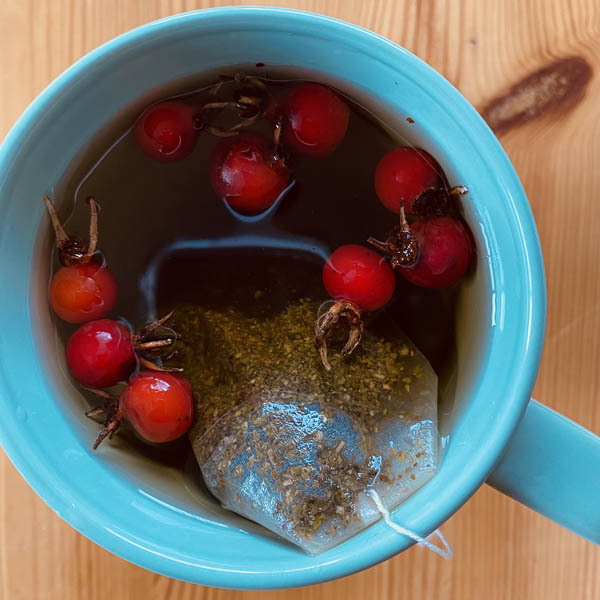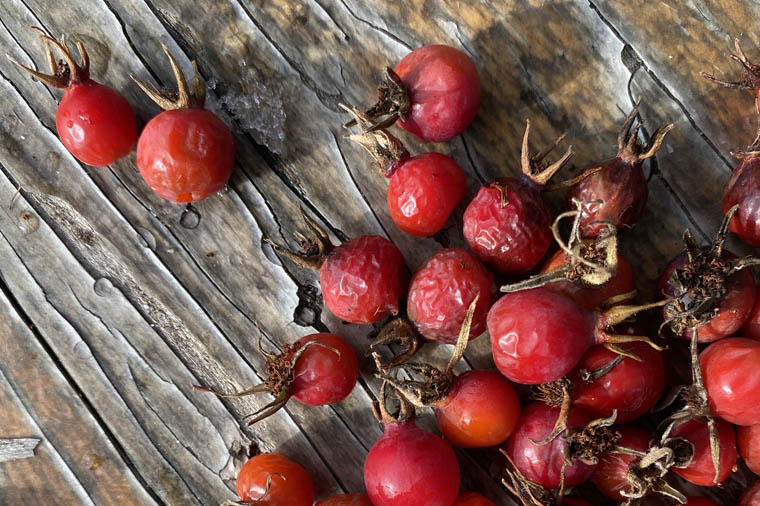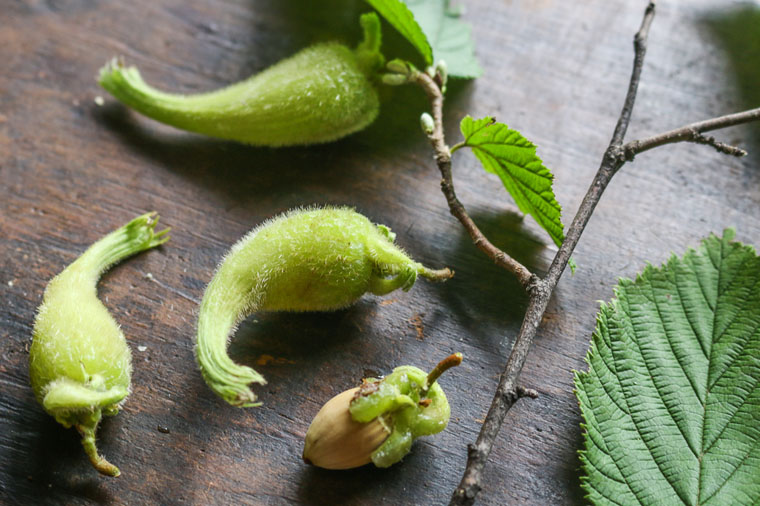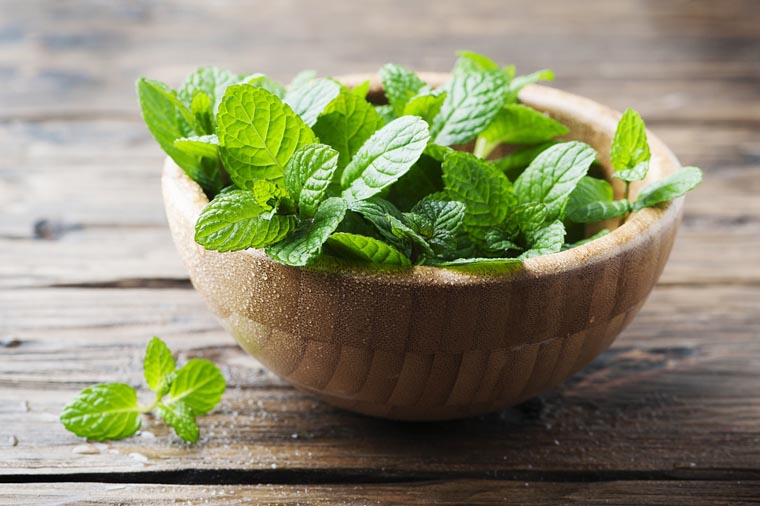How to Harvest and Use Rose Hips
What is a Rose Hip?
A rose hip is the fruit of a rose plant. It is the round portion of a rose flower just below the petals, which remains after the bloom has faded and petals have fallen away. They are typically red to orange in colour and contain the seeds of a rose plant within them. Rose hips begin to form after a successful pollination of the flowers during the spring and summer months, but usually do not fully ripen until late autumn.
What Makes a Rose Hip so Great?
Rose hips have long been used for their edible, medicinal and cosmetic properties. Both the fruit of the hip, or the outer fleshy layer, and the inner seeds of the hip have many benefits to offer. Hips are most notably high in vitamin C, just three hips has the same vitamin C content as a full size orange. Hips also contain calcium, iron, magnesium, niacin, phosphorus, potassium, protein, riboflavin, selenium, sodium, vitamins A, E and C, and zinc. They are most commonly used for their antimicrobial and astringent properties but can also be used as an antiscorbutic, antispasmodic, and diuretic.
This nutrient dense food has a history of being used in immune boosting medicinal syrups and tonics, especially during winter months, when we didn’t have as much access to fresh fruits and vegetables. Rose hips are commonly found in teas, jam, jelly, syrup, rose hip soup, as flavouring for beverages, pies, baking and even wine.
Cosmetically, it is a popular choice for its numerous benefits to the health of our skin, hair and nails. Rosehips can also be found in creams, balms, salves, serums, oil infusions, bath preparations and much more.
When to Harvest Rose Hips
Rose hips are at their best flavour when harvested after they have experienced a light frost or two. However, their medicinal properties remain throughout the winter months.
How to Harvest Rose Hips
When rose hips are fully ripe they will easily pop off a rose cane with a gentle tug. We recommend wearing protective gloves to shield your hands from the thorny briars and prickly canes.
Be careful not to over harvest. Anytime we forage in nature we should strive to have a minimal impact on the surrounding ecosystems. It is best to only pull a few hips from each each shrub, leaving plenty for the plant to reseed itself, as well as some for the local wildlife.
It is also important to follow foraging safety guidelines. Be sure of your identification before using a plant. Be mindful of possible contaminants that may make ingesting the plant harmful. For more on our foraging safety guidelines be sure to check out our blog on Winter Foraging.
Use Caution with Rose Hips
While rose hips are safe to consume, you will want to be careful to remove the hairy inner seeds of a hip. These fine hairs can cause irritation to you digestive system and have historically been used in itching powder. The hairy seeds do possess their own benefits, especially when infused with oil for cosmetic applications, however be sure to properly strain any infusions through a fine mesh to remove the hairs from the final product.
How to Store Your Hips
Since animals also like to forage rose hips over the winter, the best way to be sure your supply will last the season is to preserve your harvest indoors. There are a few methods to preserve hips, the best method will depend on how you intended use them.
Dry Your hips. Dried hips can be stored indefinitely if dried correctly and stored in a cool, dark, dry place.
Infuse your hips. By infusing oil with rose hips, you can create a base product with numerous applications that will maintain a long shelf life.
Brew your hips. Rose hip juice can be extracted by briefly boiling your hips in water and straining off the pulp. The remaining juice can be used immediately or frozen for up to a year.
Freeze your hips. If you don’t have time to process them right away, hips will freeze well until you do. This method works well if you do not intend on drying them. Fresh hips can last up to a year when stored in an airtight container in the freezer.

Dried Rose Hips
Dried hips are great for storing hips long term or for adding to teas or brews that you do not intend to strain. They can also be added as a salad topper or to your favourite trail mix.
Our Printable PDF

Rose Hip Infused Jojoba Oil
Your skin will love this rose hip infused oil. It can be used alone as a daily moisturizer or as the perfect base for a number of cosmetic preparations.
Our Printable PDF

Rose Hip Moisturizing Salve
Perfect for our dry winters, this herbal salve combines the moisturizing properties of jojoba and coconut oil with the healing properties of rose hips and vitamin E.
Our Printable PDF

Rose Hip & Peppermint Tea
Comfort in a cup, this simple herbal tea combines rose hips, peppermint and a touch of honey for a delightful yet immune boosting hot drink over the winter months.
Our Printable PDF

Immune Boosting Rose Hip Syrup
Made with rose hips, ginger, lemon and raw honey this delicious syrup can help boost your immune system with just a tablespoon or two a day. It can be added to teas, poured over pancakes or sipped straight off the spoon.
 |
| 



